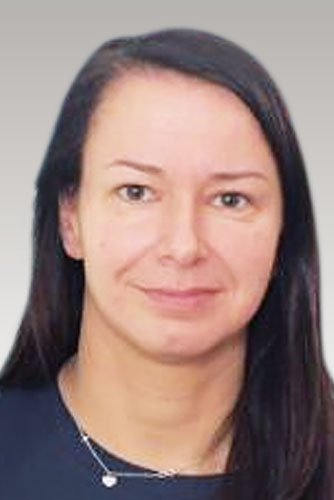Generally speaking, the field of geoinformatics is relatively new and the GIS community is still rather small in the Czech Republic. So, the first question will probably not be very original, but it suggests itself at the very beginning – what brought you to this field?
Ever since I was at grammar school, I have been inclined to geography and working with maps. At that time, however, I had no idea about the existence of geographic information systems, so my initial idea was to begin studying physical geography after graduation. Nevertheless, I attended an open day at our faculty where I was filled with enthusiasm by my today´s colleague, Associate Professor Petr Rapant, and his introduction to geoinformatics. At that time, the combination of information technology and geography was very unusual. That day determined my future career. After completing my Ph.D., I stayed on as an academic in our department. I have been able to combine my passion for geoinformatics with the opportunity to pass on the knowledge I had gained to younger students.
Since 2007, you have been working at the Department of Geoinformatics at the Technical University of Ostrava, where you teach some of the core specialised subjects. What is your opinion about the development of the educational system in GIS over the past ten years? Can we say that the conditions for teaching have changed?
The development in the field of geoinformatics has been rapid over the last ten years. Our studies and the structure of our courses undergo changes and updates quite often, as it is necessary to constantly reflect current developments and the employers´ requirements for our graduates. At the same time, it is necessary for us, the academics, to keep up, so we try to educate ourselves constantly. We attend courses and conferences, study foreign literature and pass on the acquired knowledge to our students. The teaching conditions themselves have also gone through major changes. Nowadays, it is quite common for students to have their own, high-quality technical equipment, and there is a lot of online support materials available, so teaching is easier in this respect.
I would like to pay attention to the topics of the final theses now. There is also a noticeable dynamism in the development of the field, in terms of the complexity of processing, technologies used or trends. Do you feel that the current society´s requirements and possible application of the results obtained are reflected sufficiently in the assignment of the theses?
We always try to focus our final theses on topical issues, and the theses are often prepared on the basis of requirements related to practice. When working on the theses, the students cooperate with companies closely. Currently, many theses cover environmental issues such as bark beetle calamity, monitoring glacier movement, land use, mapping of floods using satellite imagery, using unmanned aerial vehicles to locate subsurface drainage networks, etc… We have also tried to respond to the COVID-19 pandemic and some of the works are focused on it.
As already mentioned, you teach several subjects ranging from basic geoinformatics to remote sensing. Could you reveal which of the many GIS branches is closest to your heart?
For me personally, it is remote sensing. The planet Earth itself has fascinated people since time immemorial and today, in the age of satellites, the internet and modern technology, it is much easier to explore.
Your past activities included, among other things, work on water management issues, specifically the projects “TRANSCAT” and “Research and development of a modular system for the creation of applications in integrated water management”. Could you tell us more about them?
The aim of the “TRANSCAT” project was to develop an operational and integrated comprehensive Decision Support System in order to achieve optimum water management in river catchments encompassing border regions within the application of the Water Framework Directive 2000/60/EC of the European Parliament and of the Council. It also aimed to prevent extensive contamination of aquifers, to improve groundwater quality and reduce the risk of flooding.
What specifically are you working on at present?
I am currently training in machine learning and its use, especially in satellite image processing. This year I have attended machine learning workshops and studied with Professor Kanevsky at the University of Lausanne. I would like to work on water management applications, such as determining water and hydrological balance of a landscape or flood monitoring using both optical and radar data. We have good equipment at our Department, e.g., we work with unmanned aerial vehicles with hyperspectral cameras at present, so we are able to obtain very detailed and high-quality data quite quickly.
Under the current conditions, i.e., with the availability of satellite and reference data, possible automation and integration of advanced modelling techniques into GIS tools and development of machine learning algorithms, do you see a real potential in the use of satellite data in water management?
The availability and especially the ever-increasing number of satellites provides us with an essentially continuous view of planet Earth. Machine learning, artificial intelligence and other related technologies are increasingly being applied in science, and their importance is bound to grow – even in many conservative fields. We have a unique and immense dataset to process. We can thus monitor phenomena on the Earth’s surface over the long term, study water quality, search for new water sources, observe sea currents, study runoff conditions in the landscape, plan better for flood protection, and use these technologies to our advantage and to improve the ever-deteriorating environmental situation.
This sounds like an interesting incentive for potential cooperation, which can bring remarkable opportunities and results and is certainly worth considering. Thank you very much for taking the time for this interview, I wish you every success in your research and teaching activities, and I look forward to any future interview, for example on collaborative projects.

